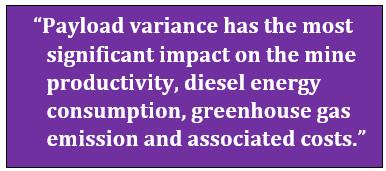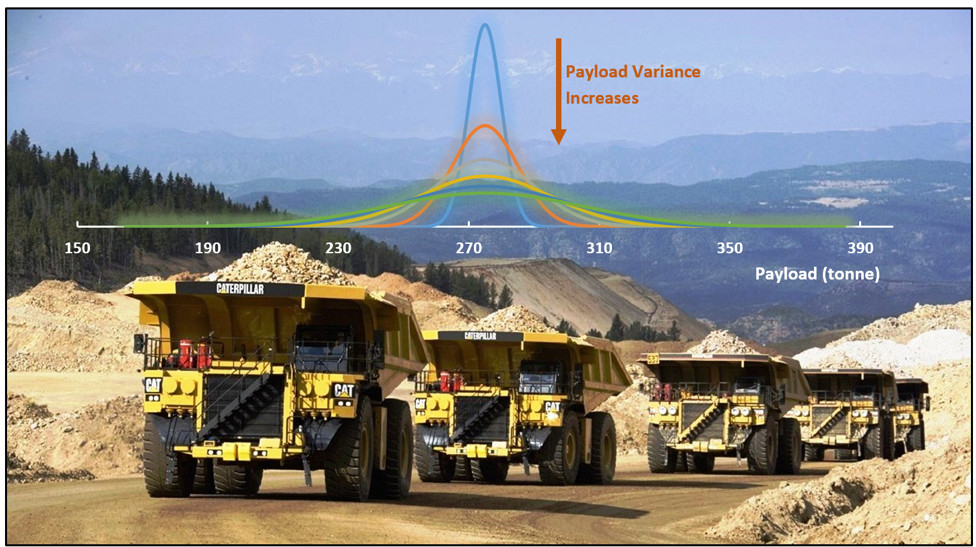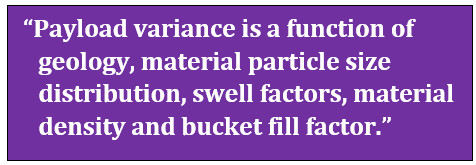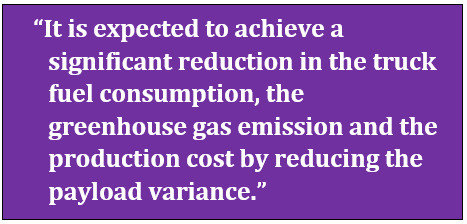
Payload variance plays a critical role in fuel consumption of mining haul trucks
A. Soofastaei, S.M. Aminossadati, M.S. Kizil and P. Knights
www.soofastaei.net
Mining3 and School of Mechanical and Mining Engineering, the University of Queensland
Haul trucks are commonly used for transporting ore and overburden materials in surface mining operations and consume diesel fuel as the source of energy. The potential for energy savings in truck haulage operations has motivated mining companies to investigate ways of improving energy efficiency of haulage operations. Payload, truck velocity, haul road condition, road design, fuel quality, weather condition and truck driver skill are among the important parameters that affect fuel consumption of mining haul trucks. Payload variance has the most significant impact on the mine productivity, diesel energy consumption, greenhouse gas emission and associated costs.
In truck and shovel operations in surface mines, loading the trucks is a stochastic process that depends on different factors such as bench geology, blast design, muckpile fragmentation, shovel operators’ efficiency, weather condition, truck and shovel utilization, mine planning and mine equipment selection. An analysis of the haul truck payload data obtained from a number of mine sites around the world shows that the payload profile can be estimated by a normal distribution (Figure 1). The payload variance associated with this distribution is typically large. It is a function of geology, material particle size distribution, swell factors, material density and bucket fill factor. Payload variance can be reduced by utilizing the latest developed technologies such as the on-line fleet monitoring system, the truck on-board payload measurement system, and its connection with the shovel control system. Payload variance affects the truck availability, maintenance costs, the production rate and the fuel consumption.
Figure 1: Normal payload distribution for different values of payload variance
This project aimed to investigate the effect of payload variance on fuel consumption for the best performance of the truck engine. The CAT 793D model truck is used in this project that is commonly used in surface mining operations.
Based on the technical specifications of this truck, the payload variance was assumed to be between 0 and 30%. Fuel consumption was examined for the above-mentioned range of payload variance for different haul road conditions. The results show that the fuel consumption increases with an increase of the payload variance for all haul road conditions. For a large open-cut coal mine in Australia operating on 8-hour-shift roster, a maximum of 35% reduction in haul truck fuel consumption can be achieved by reducing the payload variance.
The next stage of this project is to investigate the effect of payload variance on greenhouse gas emission and the production cost. Total greenhouse gas emissions will be determined based on the Global Warming Potential.
The US Energy Information Administration will also be used to estimate the associated cost. Mines can expect achieve a significant reduction in the truck fuel consumption, associated greenhouse gas emissions and the production cost by reducing payload variance.











Responses